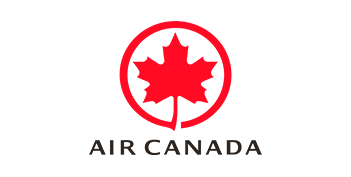How a simulation-powered digital twin helped Air Canada to manage a complex contact center migration

- Industry
- Call Center
- Location
- Montreal, Canada
- Goal
- Create a simulation-powered digital twin to improve customer contact center experience.
Achievements with Simul8
-
-
A frictionless migration to a new call system
-
-
Improved levels of agent availability
-
-
Ability to plan and forecast for major events
About the project
When previous attempts to overhaul Air Canada's contact center management led to negative media coverage as customers were left hanging on the line with no pickup, the airline was keen to make quick amends. This required a change of thinking and a new approach to consolidating its four separate contact lines onto a centralized telephony platform.
The airline created an advanced simulation-powered digital twin to replicate its call routing system. Here it could perform tests and optimization in a safe digital space that accurately reflected real world demand. This not only ensured a smooth transition to the new system, it also brought great improvements in the overall service.
Objective: Migrate disparate call center systems to a single telephony platform to improve customer experience.
Here's how they did it
Project Overview
Air Canada’s global contact center team receives around 25,000 calls daily. As the operation grew and evolved, the airline had accumulated several independent systems from different providers. Different phone numbers were in use depending on whether a customer wanted to contact the loyalty program, customer relations, baggage enquiries or the revenue line.
Air Canada recognized that this was impacting the quality of service that it could provide its customers. It also presented challenges from an internal perspective, as each line required separate contracts, management, and resourcing. It was time to consolidate everything into a single service and Amazon Web Services (AWS) Connect was selected as the new provider.

"Simul8 quickly understood the challenge. From our initial consultation, they were able to build a digital twin that accurately captured the call routing system and, through simulation, provided us with the means to test its durability, consequence free."
Program Manager - Contact Center IT, Air Canada

The Challenge
To minimize risk, the migration was broken down into four phases, one for each contact line. Due to the timings in contractual obligations, the loyalty program system had to be the first line to be migrated over to the new platform. It quickly became apparent, however, that this would be more complex than first anticipated.
The way AWS Connect managed call prioritization differed from the old systems. Where previously the priority of inbound calls would be increased based on age in the queue and then different levers could move the call up in the queue, the new telephony platform would automatically allocate inbound calls into buckets based on tiering criteria and then use a points system to move all calls in the queue.
When the new system went live for the customer loyalty line without the correct points system in place, most of the calls intercepted by agents originated from the higher-tiered buckets, leaving calls routed to the lower-tiered buckets unanswered.
It wasn't long before a few complaints about unanswered customer service calls reached the media and Air Canada faced reputational risks. A quick solution was required to correct the call routing for the loyalty line and to ensure that the roll-out would work as it scaled up.
The revenue enquiry line migration was the next scheduled phase, and it would need to handle around 6x higher call volumes, while the customer relations and baggage lines also presented critical challenges as they often fielded time sensitive, day-of-operation customer enquiries. It was at this stage that Air Canada reached out to Simul8.

"On paper, we had it all planned out, but when we put it into practice, that was when we realized that we needed the assistance of a simulation-powered digital twin. There was a "miss" on paper. We found out the hard way that the new technology behaved differently to how we had expected."
Program Manager - Contact Center IT, Air Canada

The Method
The team at Simul8 began with a consultation to understand how the new contact center needed to be structured, how many staff worked at the contact center, the number of calls received by the contact center as well as variables that could impact demand.
From here, they developed a simulation-powered digital twin to accurately capture the AWS Connect environment and ascertain the best way to prioritize calls within the new algorithm to match Air Canada's customer service goals. Once the system was successfully replicated in the digital twin, Air Canada could go further and conduct "what-if" analysis using simulation to stress test the virtual contact center and ensure it could deliver the best possible service, before it was implemented in the real world.
Several scenarios were tested, including how resilient the new platform would be when handling abnormal call volumes. The purpose of these tests was to see how prepared the new system would be in the event of an unexpected change in conditions that would drive a spike in calls. This could be anything from canceled flights, changes to the flight timetable, an internet outage or adverse weather conditions.
The Results
The simulation-powered digital twin enabled a seamless migration to AWS Connect and ensured that the new system could handle spikes in call volume. All of this was achieved within a short timeframe, with the project approved at the end of February 2022 and completed by May of that year. The speed of implementation allowed Air Canada to go live ahead of schedule and before the peak summer period.
Following the rightsizing of the loyalty line, by the time the project reached the second phase of the migration - for the revenue contact center - everything went completely to plan. There were zero customer complaints, and zero internal business complaints from the team. From there, the two final lines followed suit and went ahead without any issues at all.
Operating from a centralized telephony platform, customers could call into the switchboard from a single number and have their queries ordered by priority and answered accordingly. This was a significant improvement from managing compartmentalized systems that handled the different call queues.

"This challenge required a rapid response to ensure that there would be no further impact on customers while the rest of the migration took place. Thankfully, our consulting team is very familiar with the inner workings of contact centers. We were able to take some fundamental building blocks for a digital twin in this setting and fine tune them to Air Canada's requirements without any delay."
Director of Services and Strategic Partnerships, Simul8

What's Next?
Simul8's expertise helped the airline overcome several challenges and the solution that the team designed will operate alongside the live system to drive continuous improvement and process efficiency.
Air Canada continues to review how it can keep improving its digital services and believes there are other areas of the business where Simul8's technology can be utilized to further enhance the customer's digital journey.

"Simul8 came in and went well above all of our expectations. They helped us to build the tool and then run simulations. By leveraging a custom-made simulation-powered digital twin, we were able to rightsize AWS Connect prior to committing to a full migration. I cannot thank Simul8 enough."
Program Manager - Contact Center IT, Air Canada

Find out how Simul8 can help you build a digital twin
Lean on the expertise of our highly experienced Simul8 experts to build a simulation-powered digital twin that transforms decision-making at your organization.
Learn more